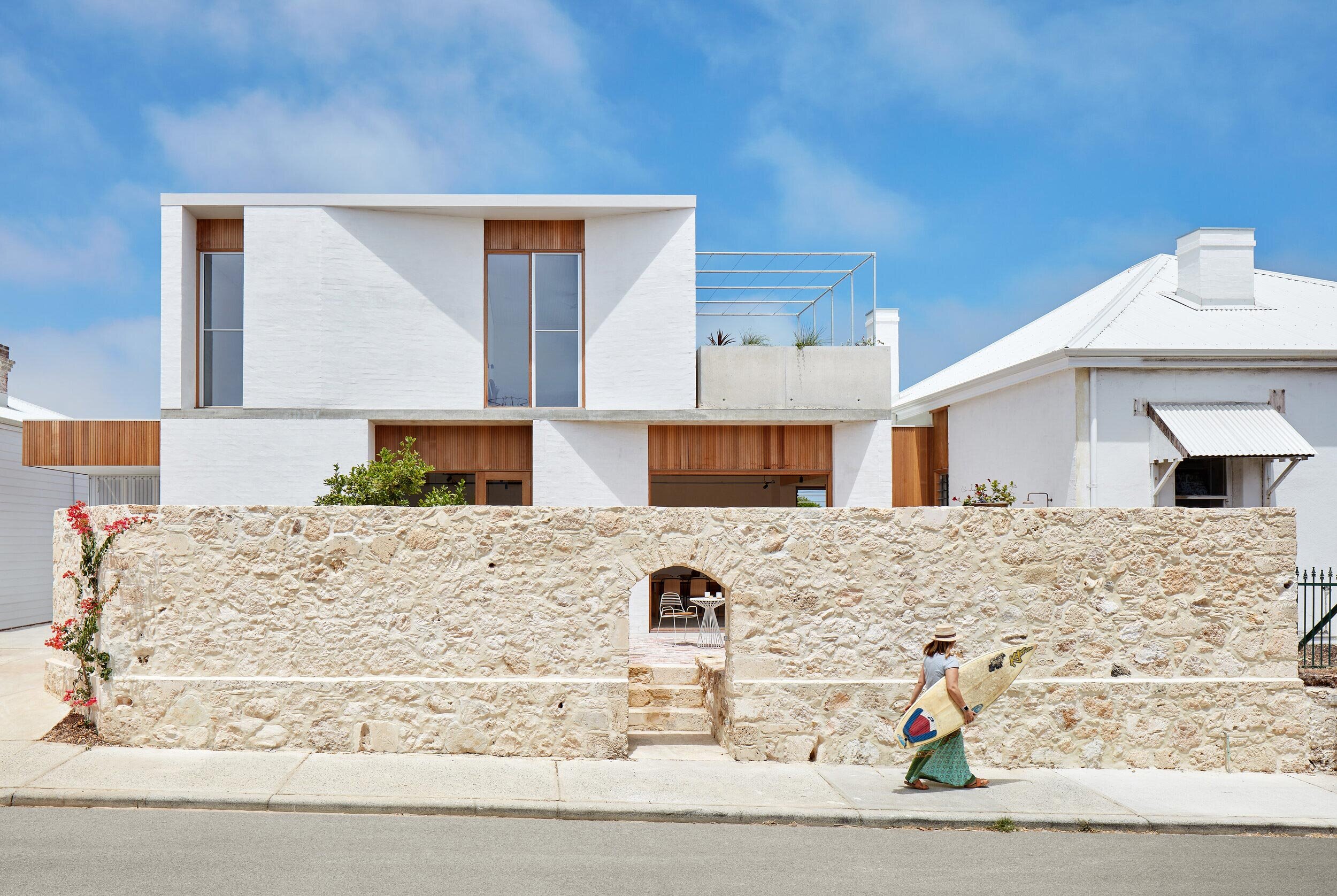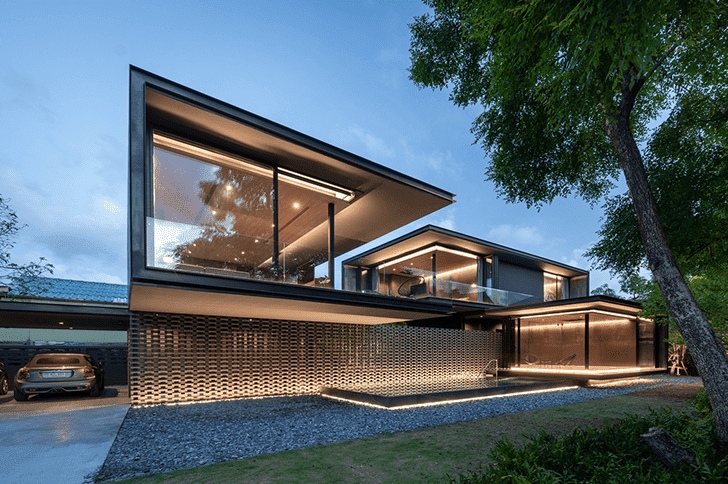Residential Architects: Creating Beautiful, Functional Spaces for Every Home
Residential Architects: Creating Beautiful, Functional Spaces for Every Home
Blog Article
Top Fads in Residential Design You Should Learn About
As household design remains to develop, numerous engaging trends are forming the way we develop and inhabit our space. Key advancements such as sustainable building methods, the assimilation of smart home technology, and the rise of modular homes highlight a substantial shift towards both functionality and environmental duty. In addition, concepts like open strategy living and biophilic design are redefining our interaction with area and nature. Recognizing these fads not just informs style options but likewise discloses more comprehensive implications for way of living and neighborhood - residential house architect. What might these technologies mean for the future of domestic living?
Lasting Structure Practices
A raising number of property jobs are accepting sustainable structure techniques, driven by an expanding understanding of environmental effect and power effectiveness. This shift is characterized by the assimilation of environment-friendly products, energy-efficient styles, and innovative building approaches. Home owners and building contractors are progressively prioritizing using renewable energies, such as bamboo and recycled metals, which not just minimize the carbon footprint but likewise improve the sturdiness and aesthetic allure of buildings.
Incorporating energy-efficient systems is one more crucial facet of sustainable structure - residential house architect. Features such as high-performance insulation, energy-efficient home windows, and solar panels are ending up being standard in brand-new property designs. These aspects not just add to lower power intake but additionally supply significant long-term financial savings for property owners
In addition, the design of sustainable homes frequently stresses natural light and air flow, decreasing the reliance on fabricated illumination and environment control systems. Landscape design methods, such as xeriscaping, more promote sustainability by decreasing water use.
As the need for lasting living services remains to rise, the property design field is poised to introduce and adapt, making sure that future homes are not just environmentally responsible but likewise comfy and functional for their passengers. - residential house architect
Smart Home Technology
Smart home technology is reinventing the means homeowners communicate with their living rooms, boosting convenience, safety, and power administration. This ingenious technique incorporates numerous tools and systems, permitting customers to regulate their homes from another location or via automated procedures. Central to this fad is the usage of wise tools such as thermostats, lights, safety electronic cameras, and devices, all attached using the Net of Points (IoT)
Among one of the most attractive functions of wise home innovation is the capability to customize settings for optimal power performance. House owners can keep an eye on energy usage and adjust home heating, air conditioning, and illumination based on their regimens, substantially reducing energy expenses. Sophisticated safety and security systems outfitted with wise locks and security cams provide tranquility of mind, allowing remote monitoring and informs to potential security violations.
Integration with voice-activated assistants boosts individual experience, enabling homeowners to manage devices with easy voice commands. As technology proceeds to advance, the potential for wise home systems to enhance top quality of life expands, making them a crucial consideration in contemporary property design. Inevitably, smart home innovation is not just a fad but an essential change towards much more smart living environments.
Open Idea Living
Open up principle living has actually arised as a defining feature in contemporary household design, identified by the elimination of traditional barriers in between spaces. description This style approach advertises fluidness and connectivity within the home, enabling for a smooth change in between areas such as the kitchen area, eating, and living spaces. By removing wall surfaces and partitions, open idea designs produce a sense of spaciousness, promoting an inviting environment that improves social communication.

Furthermore, this strategy to household style aligns with minimalism, concentrating on functional simplicity and visual comprehensibility. House owners value the adaptability of these designs, which can be easily adjusted to mirror personal design through furnishings plan and style. As open concept living proceeds to gain grip, it remains a testimony to evolving household characteristics and the desire for homes that enhance connection and convenience.
Biophilic Layout
Biophilic style has actually ended up being progressively considerable in residential style, emphasizing the innate link in between people and nature. This layout philosophy looks for to integrate natural aspects right into living areas, thereby fostering a sense of wellness and boosting the lifestyle for occupants. By integrating functions such as all-natural light, plant life, and organic materials, biophilic design promotes a harmonious connection in between interior environments and the natural world.
Crucial element of biophilic style consist of large windows that provide unobstructed views of outside landscapes, living walls that present plant right into insides, and open flooring strategies that motivate air flow and all-natural light penetration. Water features, both inside and outside the home, serve to create relaxing environments and improve sensory experiences.
Moreover, making use of sustainable materials not just sustains ecological stewardship however read likewise adds to healthier indoor air quality. As awareness of environmental problems increases, house owners are progressively prioritizing layouts that official source show their connection to nature. Fundamentally, biophilic layout not just elevates visual charm but additionally addresses psychological and mental needs, making it a vital fad in modern residential design.
Modular and Prefab Homes

Additionally, prefab and modular homes are made with sustainability in mind. Lots of makers use energy-efficient systems and green products, such as photovoltaic panels and advanced insulation techniques, contributing to reduced energy consumption and reduced energy costs for property owners. The flexibility of design alternatives enables modification, providing to diverse functional needs and visual preferences.
As the demand for budget-friendly housing continues to increase, modular and prefab homes present a sensible solution, dealing with both economic and ecological difficulties. Communities are significantly acknowledging the possibility of these frameworks, incorporating them into city and rural settings. Overall, the fad towards modular and prefab homes signifies a change towards much more sustainable, reliable, and versatile living atmospheres, making them a critical aspect of contemporary household design.
Verdict
Lasting building techniques and clever home technologies enhance efficiency and convenience, while open concept living and biophilic design foster social interaction and a link to nature. The increase of prefab and modular homes uses adjustable and budget friendly remedies, mirroring a broader shift towards functional and responsible living.
Trick growths such as lasting building methods, the assimilation of clever home modern technology, and the increase of modular homes highlight a significant shift towards both capability and ecological responsibility.The rise of prefab and modular homes has actually transformed the residential style landscape, offering cutting-edge options for effective and sustainable living.In addition, prefab and modular homes are developed with sustainability in mind. In general, the fad towards modular and prefab homes signifies a change toward more sustainable, efficient, and versatile living environments, making them a crucial element of modern residential style.
Sustainable structure methods and smart home innovations enhance efficiency and convenience, while open principle living and biophilic style foster social interaction and a connection to nature.
Report this page